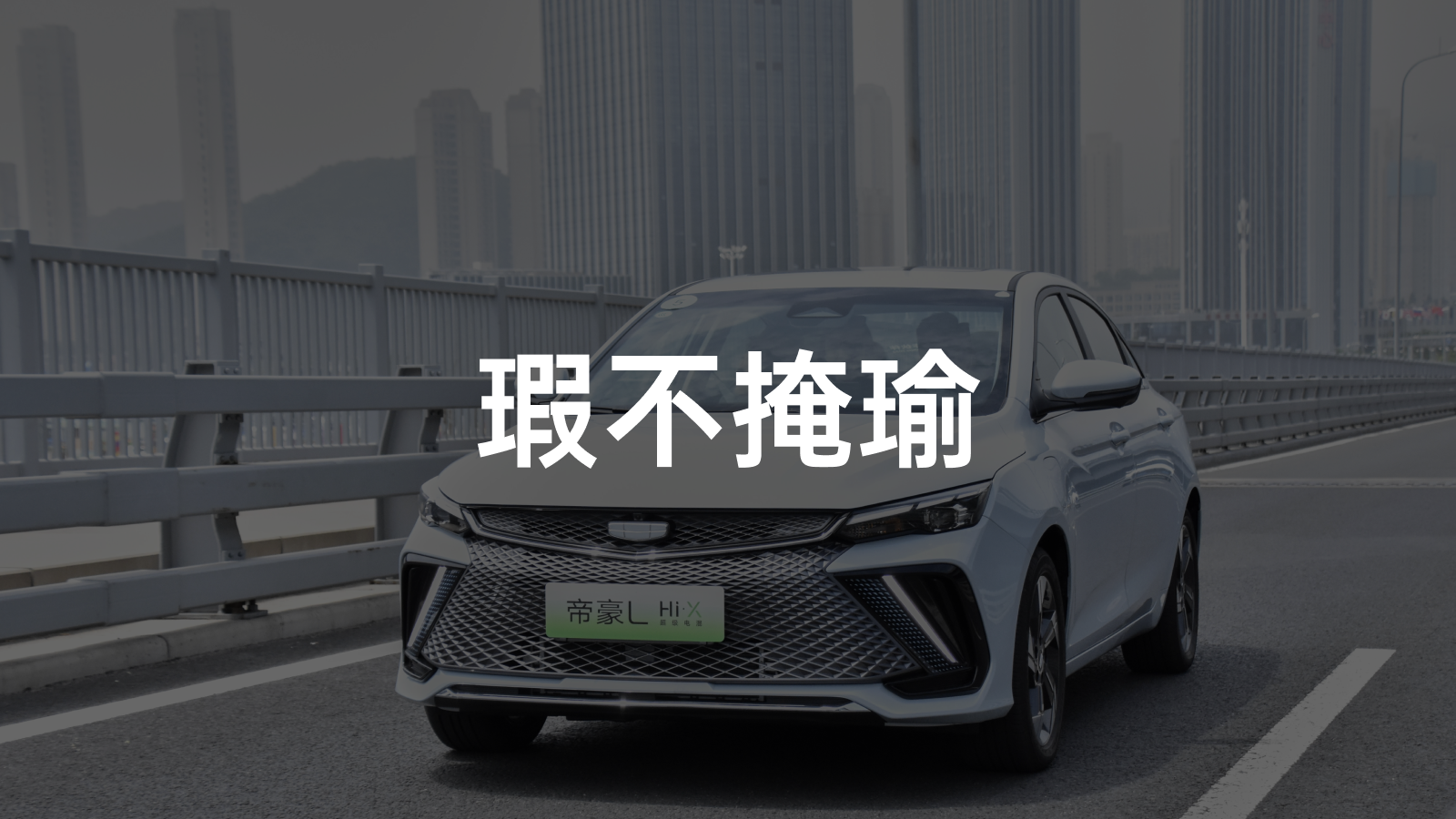If we look at the sales volume of passenger cars in China, the hybrid market is a real “blue ocean in a red ocean”.
According to the sales data from the China Passenger Car Association, in the 12 months of 2021, PHEV vehicle sales reached 544,900 units, a year-on-year increase of 171.2%, surpassing pure EVs at 168.6%. And from January to June this year, pure EVs saw a year-on-year growth of nearly 107.8%, while PHEVs reached an impressive 194.3%, expanding their lead.
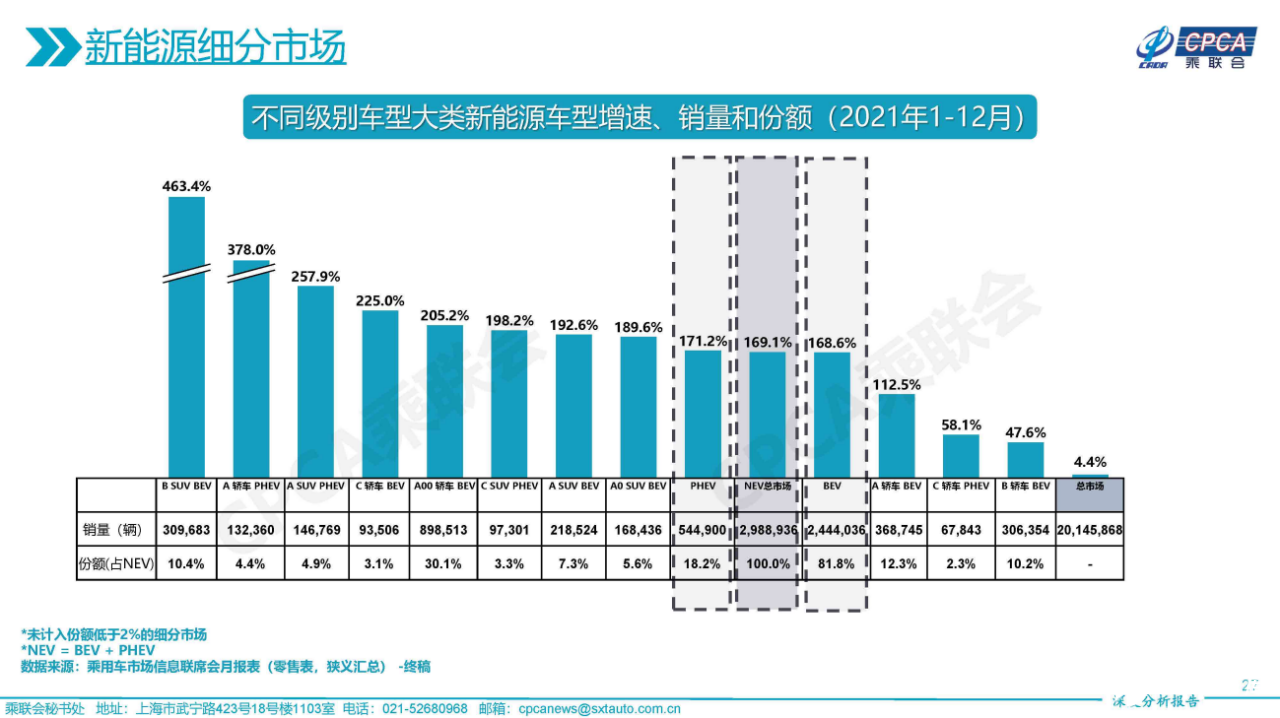
Throughout 2021, BYD and NIO outperformed their rivals. BYD sold 229,198 PHEVs for the year, while NIO’s sales of a single model reached 91,310 units. The reason for the “duopoly” in the PHEV market is, there isn’t a new competitor strong enough to challenge them, unlike the fiercely competitive pure EV market.
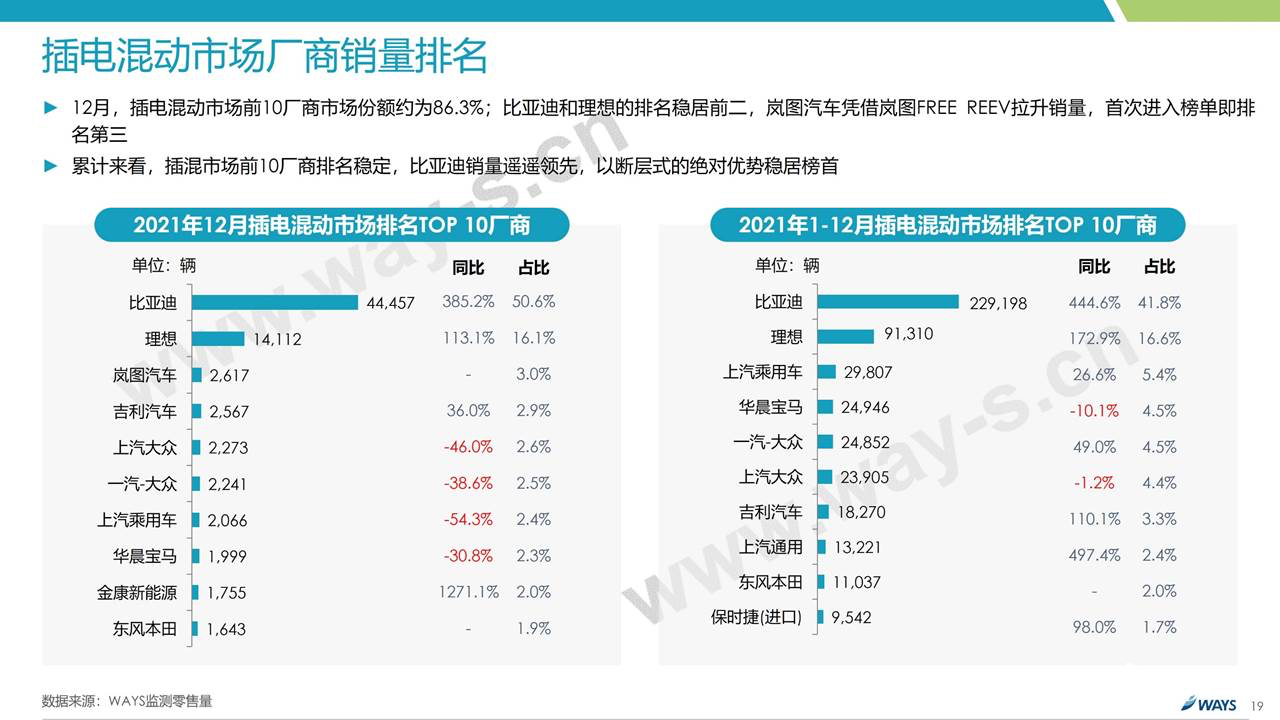
Not to be left behind, Geely has introduced a hybrid model of its star product, the Geely Emgrand L, called the Emgrand L Rayttle Hi·X Super Electric Hybrid. We have to admit, although it has weak points, this is an excellent product.
A Product with Clear Pros and Cons
For a hybrid model, important factors that influence buyers include fuel efficiency, battery life, driving performance and ride quality – so let’s start with an overview of the Emgrand L Rayttle Hi·X Super Electric Hybrid’s dynamic performance.
But before that, let’s first take a look at what Geely’s Rayttle Hi·X Super Electric Hybrid system is and how it differs from BYD’s DM-i.
What is the Rayttle Hi·X Super Electric Hybrid?
To make their hybrid systems seem more sophisticated, carmakers often give them fancy names. But beneath the surface, there are generally two types of hybrid systems on the market: those with a “fixed-axis gear shifting structure” and those with a “planetary gear shifting structure”.
The BYD DM-i is a representative model of the fixed-axis gear shifting structure, while the Honda i-MMD and Great Wall Lemon Hybrid DHT fall into this category too.
The Geely Rayttle Hi·X Super Electric Hybrid belongs to the second category – the planetary gear shifting structure. Toyota’s Hybrid System (THS) is the representative model of this hybrid structure. In THS, the planetary gears connect the engine, planetary gear discs and outer ring gears to two electric motors.However, the Geely Zeekr Hi-X, based on Toyota’s foundation, has made significant innovations with the Dual Sun-Gear Transmission: by manipulating the components, three extra gears are provided to “squeeze dry” the engine’s efficiency and ensure that the engine stays in the most efficient range under any circumstances.
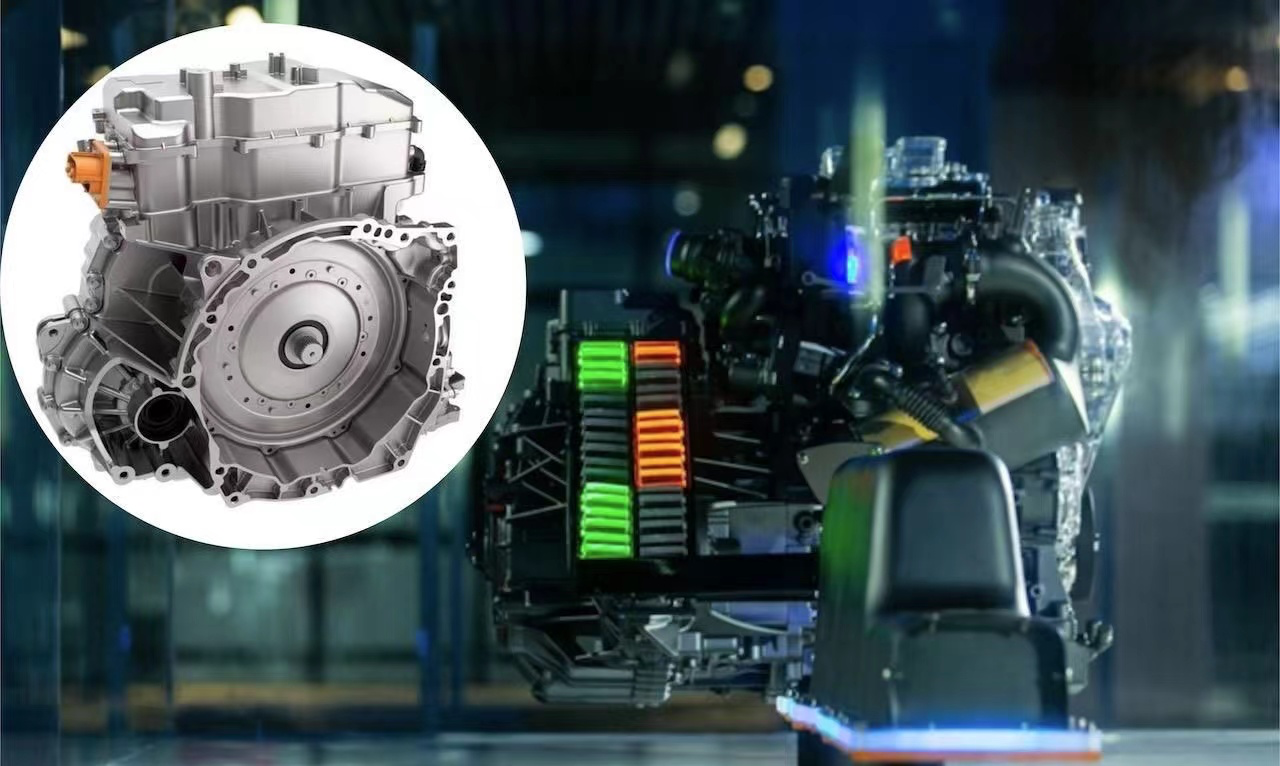
The design of the Dual Sun-Gear Transmission allows the Geely Zeekr Hi-X to enter parallel mode at speeds above 20 km/h, and can switch between three gears in the most commonly used city conditions of 30-70 km/h, giving the engine more opportunities to participate directly in driving to achieve fuel efficiency. In comparison, Honda’s i-MMD direct drive requires speeds above 80 km/h, while BYD’s DM-i requires speeds above 70 km/h.
According to Geely’s official data, this system has a fuel consumption of only 3.8 L per hundred kilometers, and a comprehensive range of up to 1,300 km. This 1.5TD four-cylinder hybrid engine has Miller Cycle, turbocharged intercooler, high-pressure direct injection, and low-pressure Exhaust Gas Recirculation (EGR) technology, which enhances cooling while improving thermal efficiency.
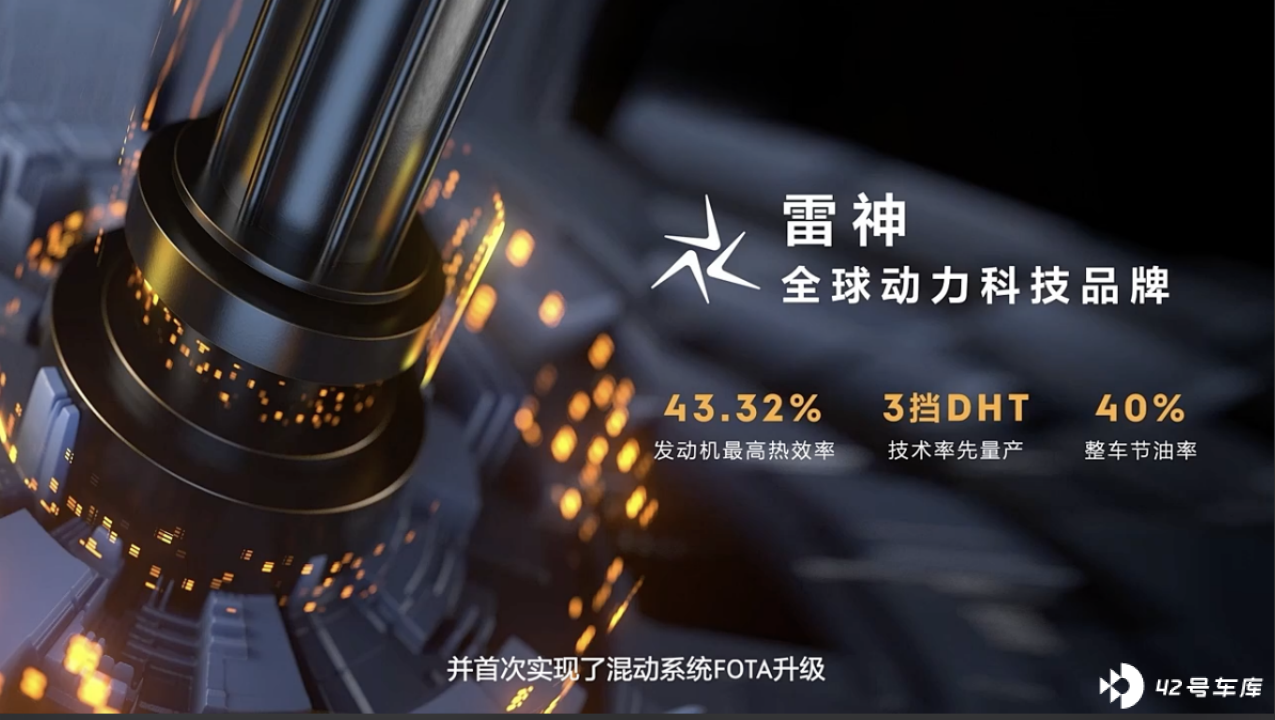
This also makes this engine’s maximum thermal efficiency reach 43.32%, making it the creator of the world’s highest thermal efficiency record for mass-produced hybrid engines. Reflected in the data, the maximum power of this 1.5T four-cylinder engine is 133 kW, the maximum torque is 290 N·m. In conjunction with the front-wheel electric motor of 100 kW/320 N·m, the system’s comprehensive maximum power is 233 kW, the maximum torque is 610 N·m, and the acceleration per hundred kilometers is 6.9 seconds, with a top speed of 230 km/h.
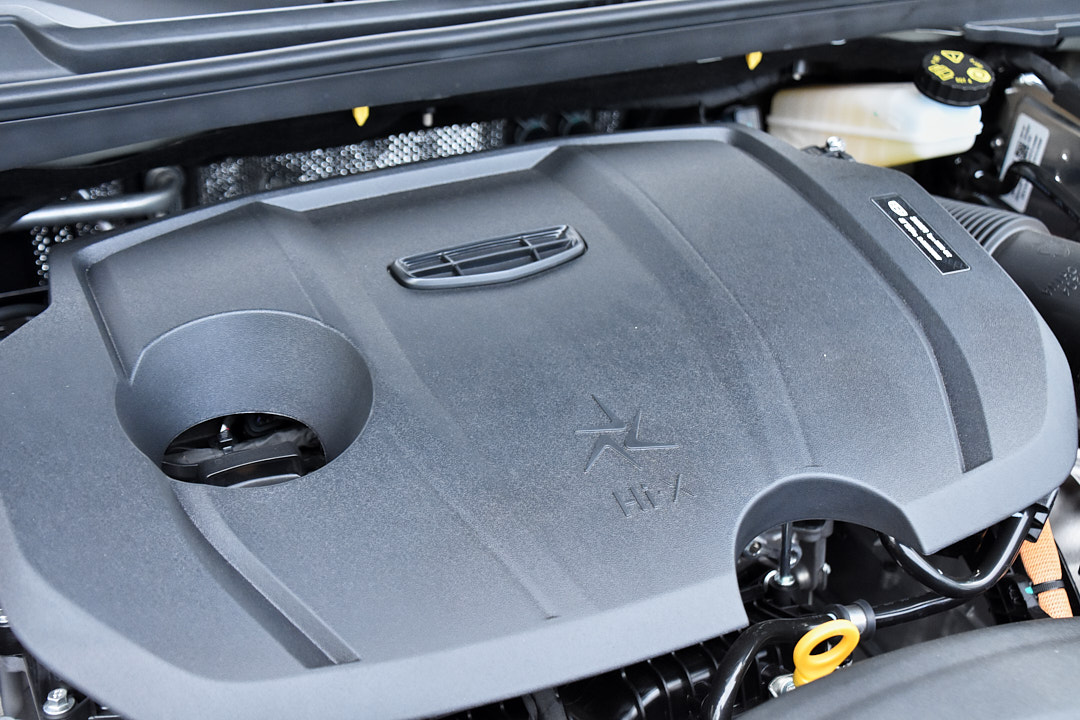
In addition, the entire range of the Emgrand L ZEEKR Hi-X Super Electric Hybrid comes standard with a 15.5 kWh ternary lithium battery, which can achieve 100 km of pure electric range under the NEDC condition. On paper, except for the battery capacity and motor power, the Emgrand L ZEEKR Hi-X has already surpassed the BYD Qin PLUS in the powertrain aspect:
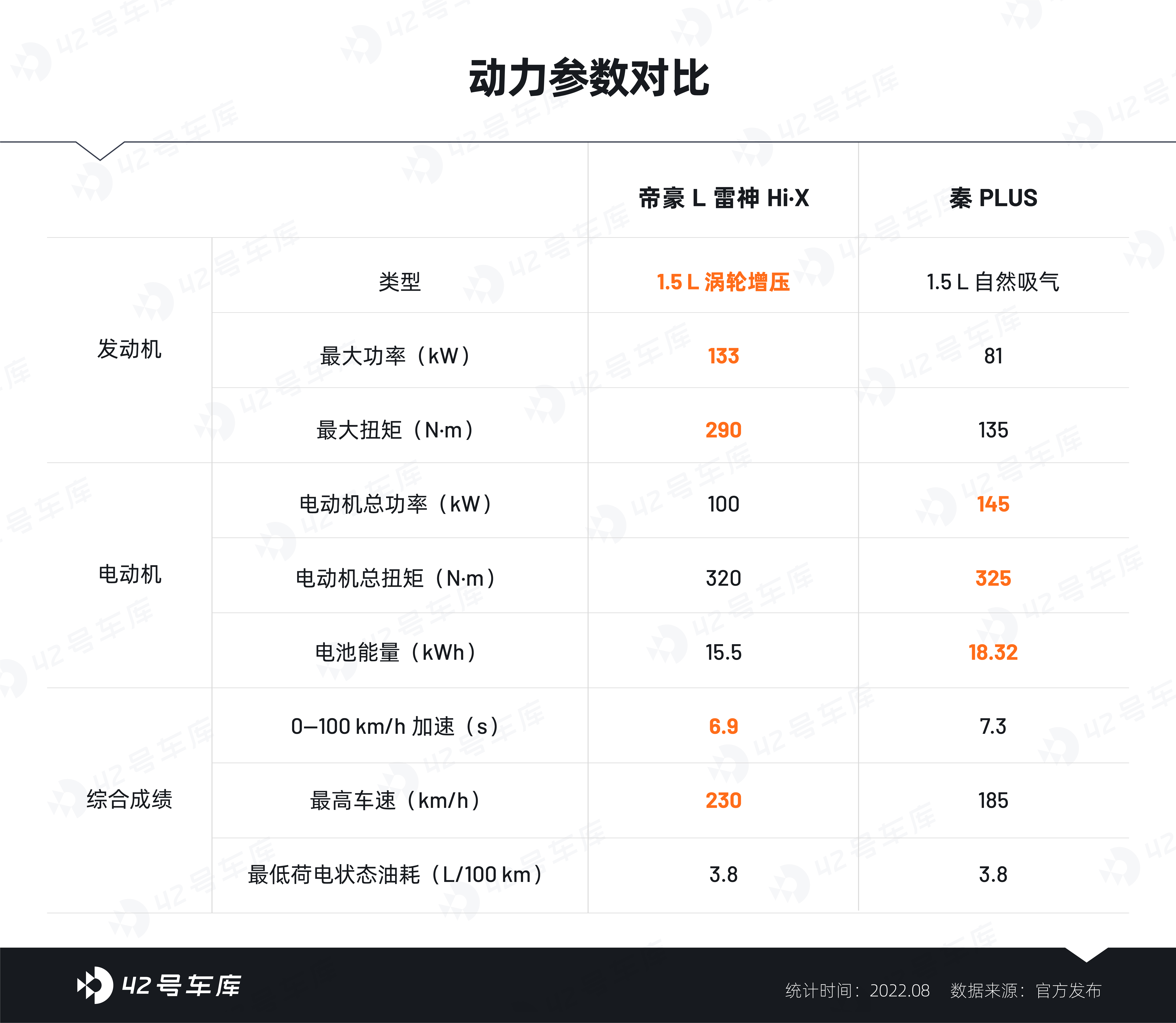
However, regardless of the numbers, the product’s experience speaks for itself. Let’s see how it performs in reality.
Outstanding Power PerformanceThe test drive took place in Dalian, Liaoning Province. As a city surrounded by mountains and seas, it not only has a pleasant climate, but also has complicated road conditions such as undulating sections and elevated expressways, providing various driving scenarios to experience the dynamic performance of the Geely Emgrand EV and Lynk & Co 01+ plug-in hybrid.
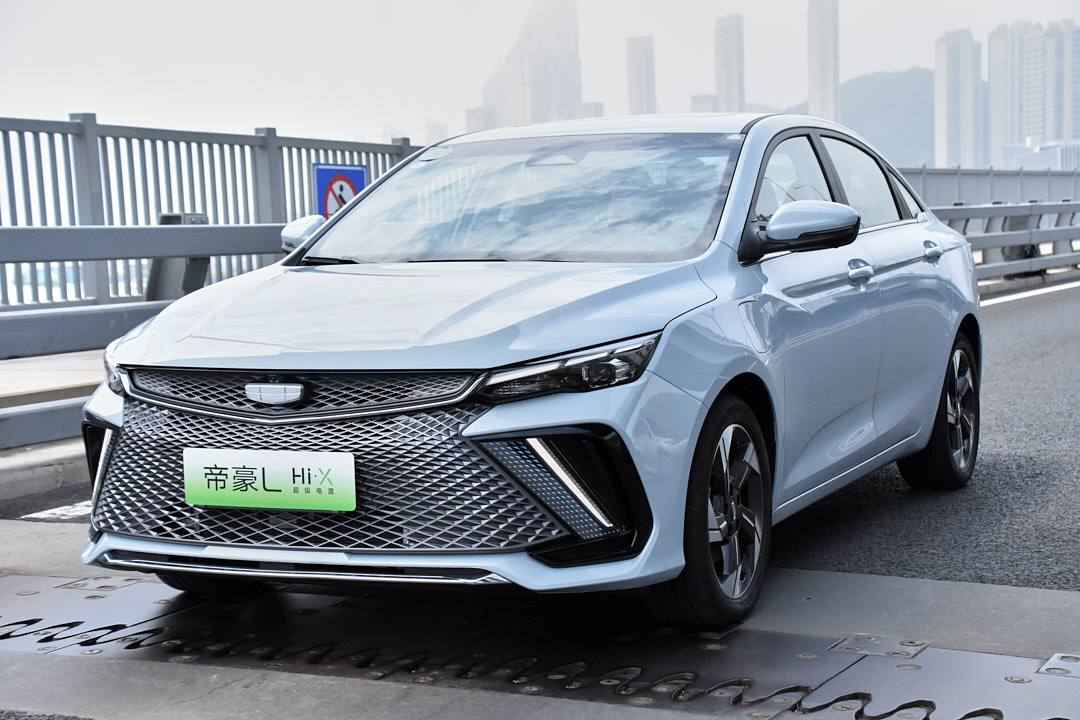
The Geely Emgrand EV and Lynk & Co 01+ plug-in hybrid have two power output modes to choose from: “Pure Electric EV” and “Hybrid HEV”. In Hybrid HEV mode, there are also four different styles to choose from. Since it has an impressive official acceleration performance of 6.9 seconds, let’s start with “Sport”.

At this time, the Geely Emgrand EV and Lynk & Co 01+ plug-in hybrid’s acceleration sensation is very powerful. When stepping on the accelerator deeply, the benefits brought by the third gear dual-clutch transmission are obvious: the engine can help accelerate more freely, bringing a very agile driving experience. However, when stepping on the accelerator deeply in Sport mode, the engine speed will increase significantly, and although it is not irritating, the noise at this time is enough to be noticed by passengers. But this kind of rapid acceleration is relatively extreme, and in Comfort mode, the engine will “retire to the background” quietly.
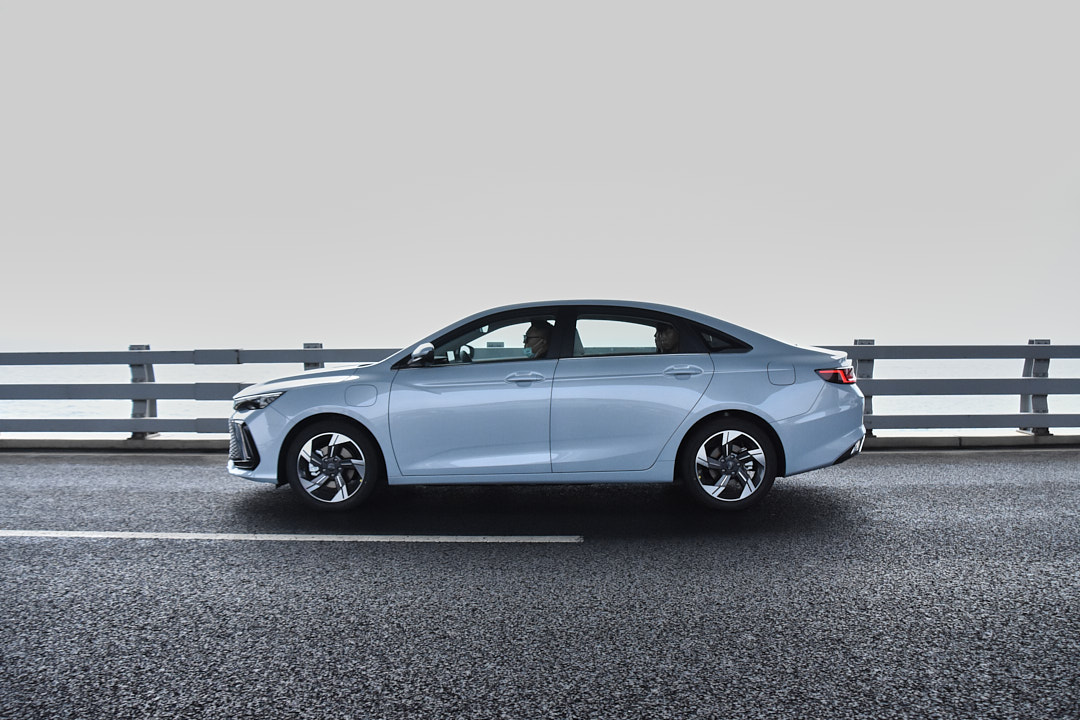
In Comfort mode, the Geely Emgrand EV and Lynk & Co 01+ plug-in hybrid basically uses pure electric drive logic most of the time, so the vehicle is very quiet and there is no jerky feeling. When the accelerator is pressed slightly deeper, the engine will intervene, but the action of the clutch engagement is almost imperceptible in terms of sensation. In addition, it is worth noting that the engine vibration control of the Geely Emgrand EV and Lynk & Co 01+ plug-in hybrid is good. It is almost imperceptible in the front row, and only some slight working sounds can be heard after the engine intervenes.
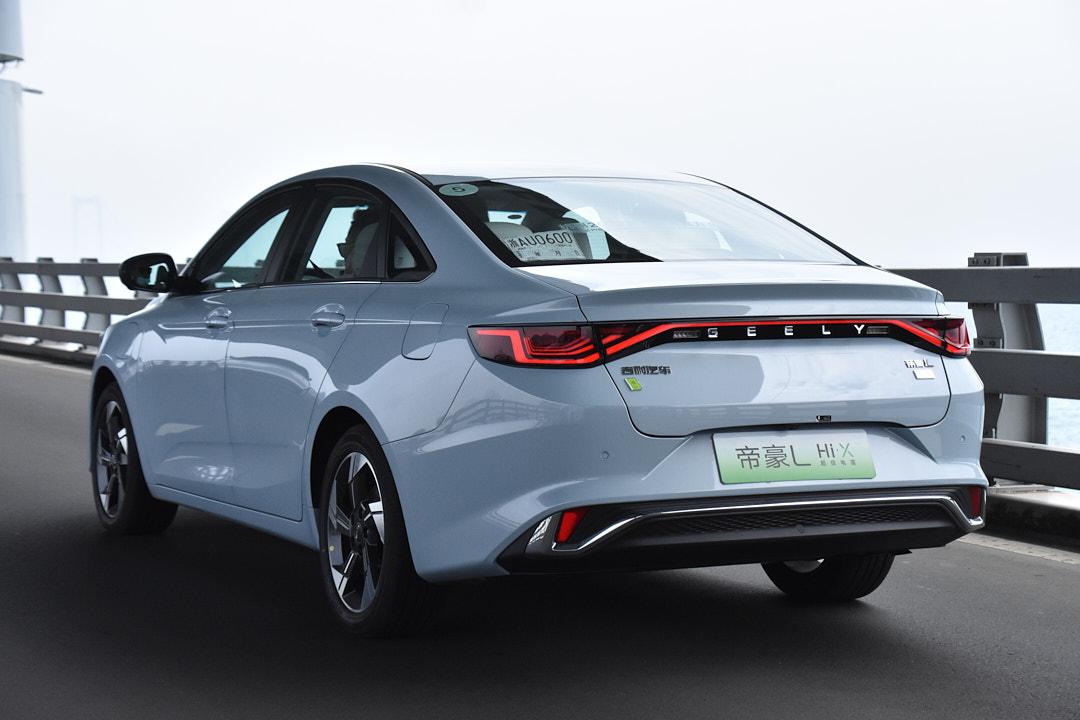
Through the work status indicator icon on the instrument panel, it can be known whether it is in series, parallel, or hybrid connection. Since the engine of the Geely Emgrand EV and Lynk & Co 01+ plug-in hybrid has a suitable gear ratio for direct drive between 20-70 km/h in this hybrid system, the engine also has more opportunities for parallel connection in Hybrid mode, which can bring a better sense of power.
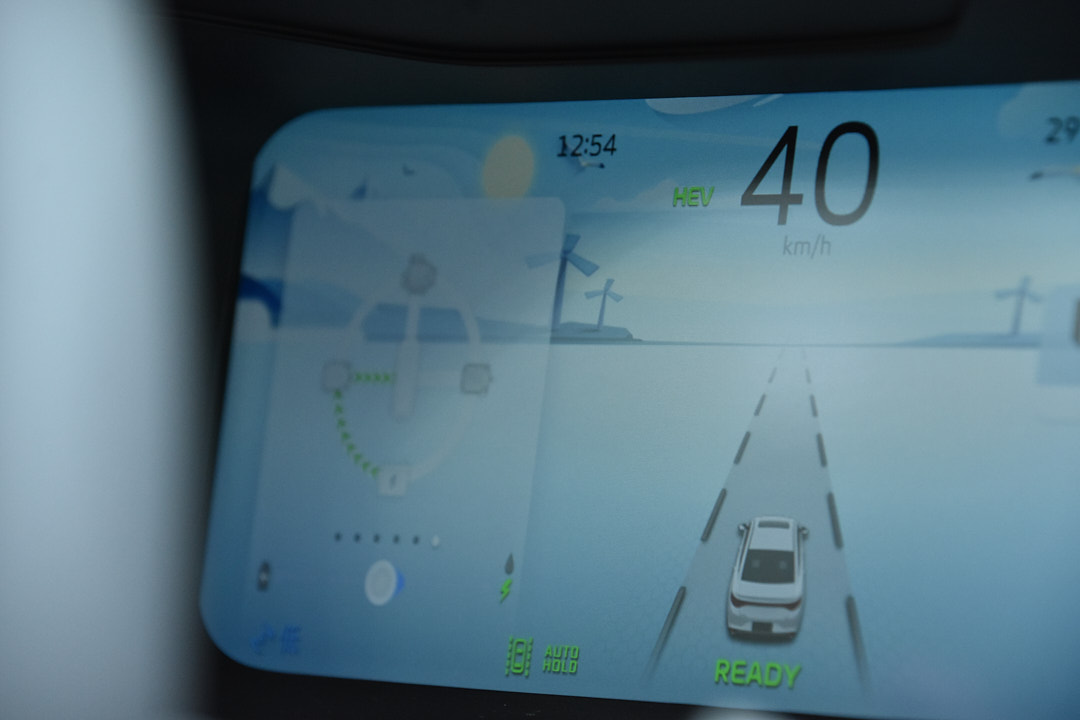 It should be noted that the front axle motor power of the Geely Emgrand L Raytheon Hi·X is 100 kW, with a maximum torque of 320 N·m, which is slightly smaller than the BYD Qin PLUS’s 145 kW/325 N·m. Therefore, when the Geely Emgrand L Raytheon Hi·X is switched to “pure electric EV” mode, there is still some power gap compared to the hybrid mode, which reduces the sense of pleasure. Of course, the zero-delay feature of the electric motor still makes the Geely Emgrand L Raytheon Hi·X easier to drive in pure electric mode.
It should be noted that the front axle motor power of the Geely Emgrand L Raytheon Hi·X is 100 kW, with a maximum torque of 320 N·m, which is slightly smaller than the BYD Qin PLUS’s 145 kW/325 N·m. Therefore, when the Geely Emgrand L Raytheon Hi·X is switched to “pure electric EV” mode, there is still some power gap compared to the hybrid mode, which reduces the sense of pleasure. Of course, the zero-delay feature of the electric motor still makes the Geely Emgrand L Raytheon Hi·X easier to drive in pure electric mode.
On the 63.1 km test drive route, we passed through city expressways, undulating mountain roads, and traffic jams. At this time, the hybrid energy consumption per 100 kilometers is 1.6 liters of gasoline + 8.1 degrees of electricity.
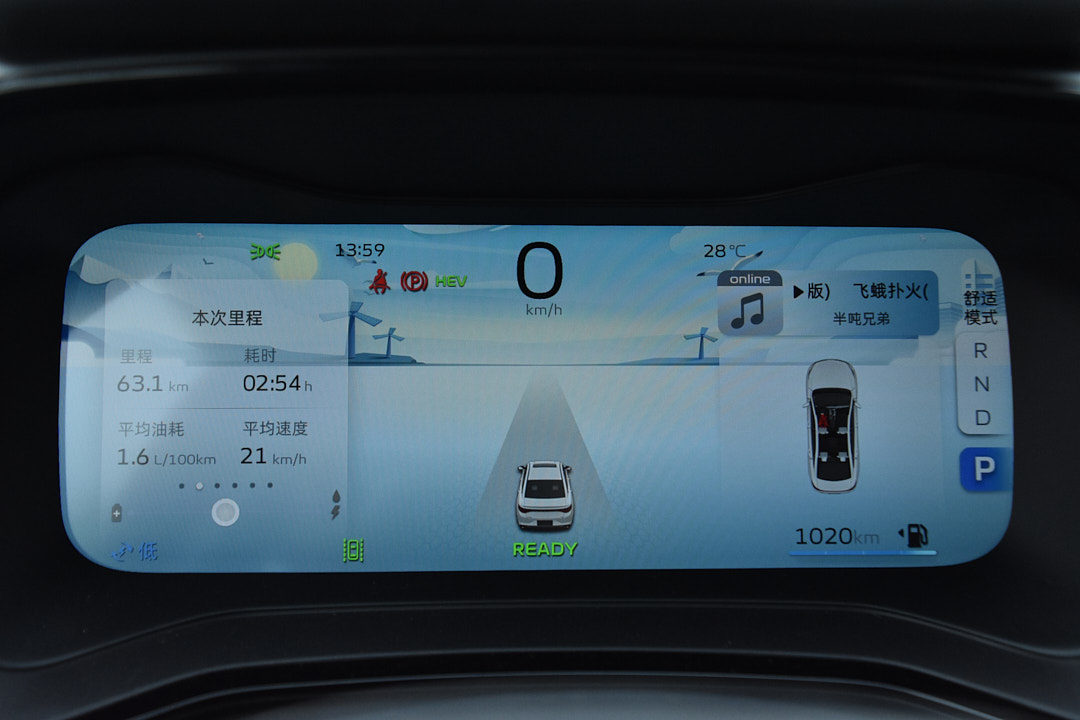
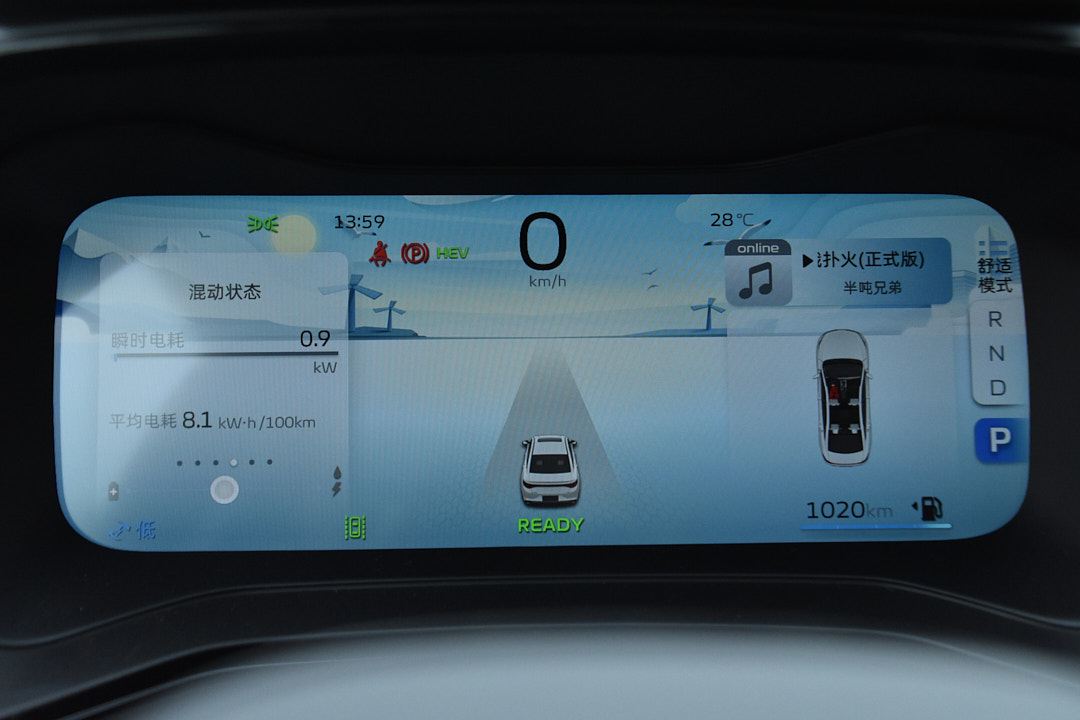
However, it should be noted that the vehicle we tested was in a fully charged state when we started. And limited by the test drive time, we could not experience the driving performance of the Geely Emgrand L Raytheon Hi·X in the power supply state. But based on this half-day experience, the power system of the Geely Emgrand L Raytheon Hi·X performed very well.
A few small regrets
Feeling the excellent performance of the hybrid system, I unconsciously raised my requirements for the Geely Emgrand L Raytheon Hi·X and found several areas where I believe improvements are needed.
The most regrettable thing is the performance of the Geely Emgrand L Raytheon Hi·X’s rear suspension. The configuration of the non-independent suspension with a torsion beam is reasonable relative to the price, but there is obviously room for improvement in tuning. During the test drive, although the road quality was very good, I could feel the subtle vibrations constantly transmitted from under my butt in the right rear seat.
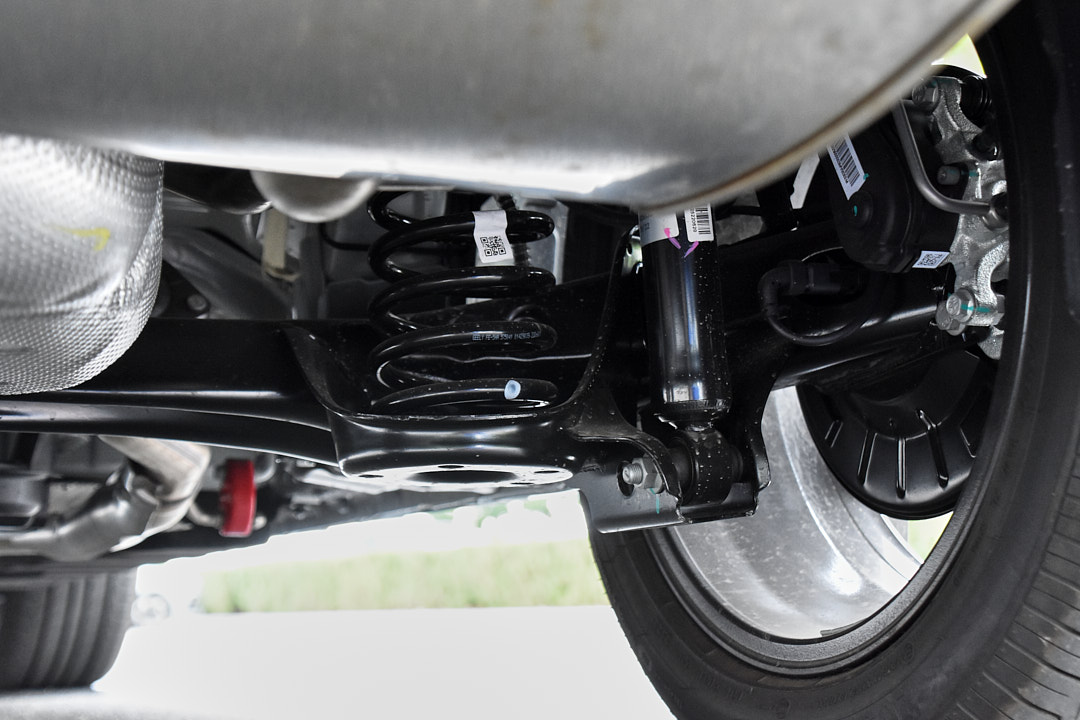
My fellow passenger and I suspected that the factory tire pressure of the test car was too high, which caused the rear axle to jump like that, but after checking the dashboard, we found that all four wheels were at 2.4 bar.
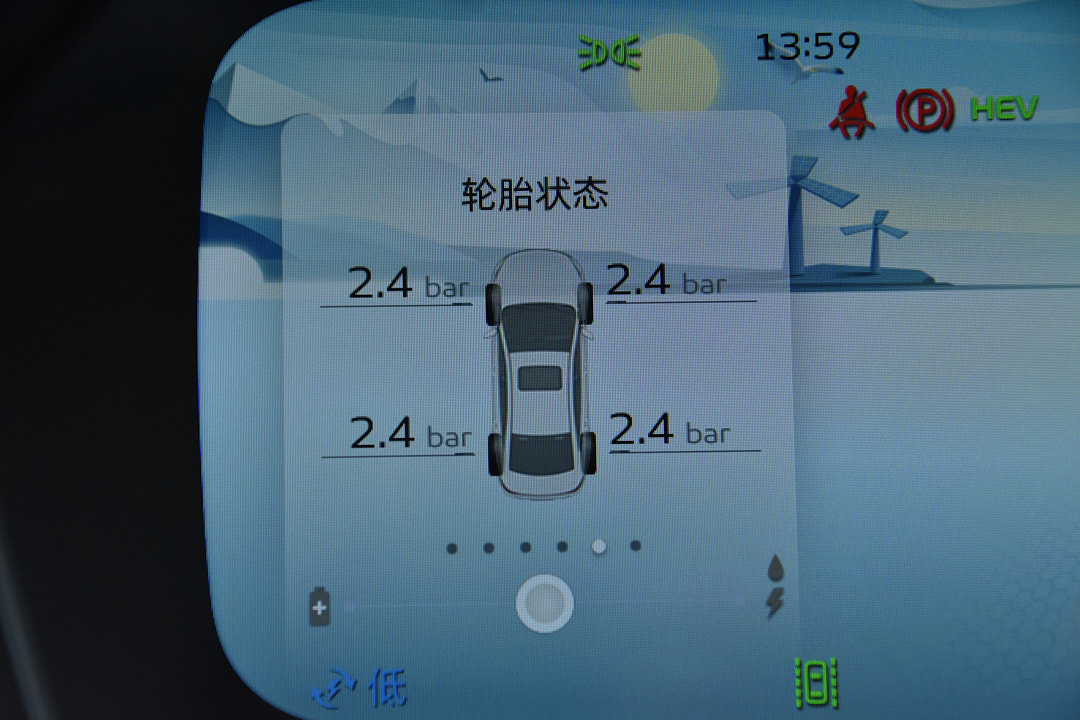
However, when sitting in the front row of the Geely Emgrand L Raytheon Hi·X, the vibrations and undulations of the road are filtered out very cleanly, and there is not much discomfort, which makes me a little confused about this divided performance of the front and rear rows. And when driving on mountain roads, the bouncing of the rear axle suspension always gives the car a somewhat unstable feeling.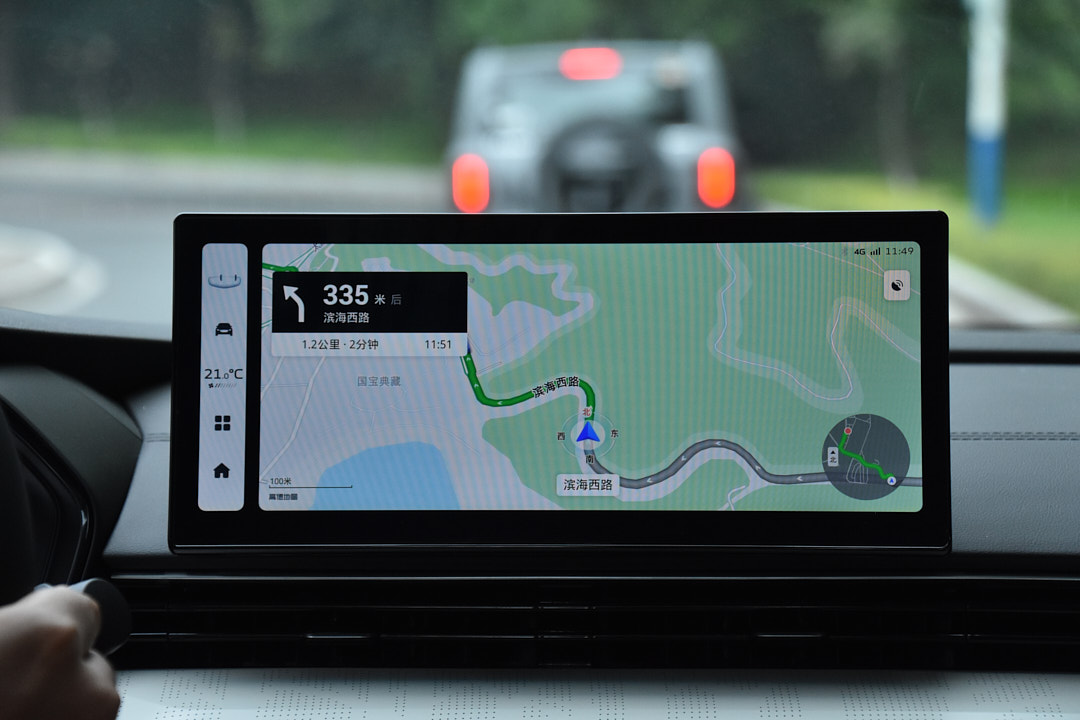
However, the stiff suspension still brings some benefits. When encountering large undulations and potholes on the road, the vehicle suspension can hold the body well, without bottoming out.
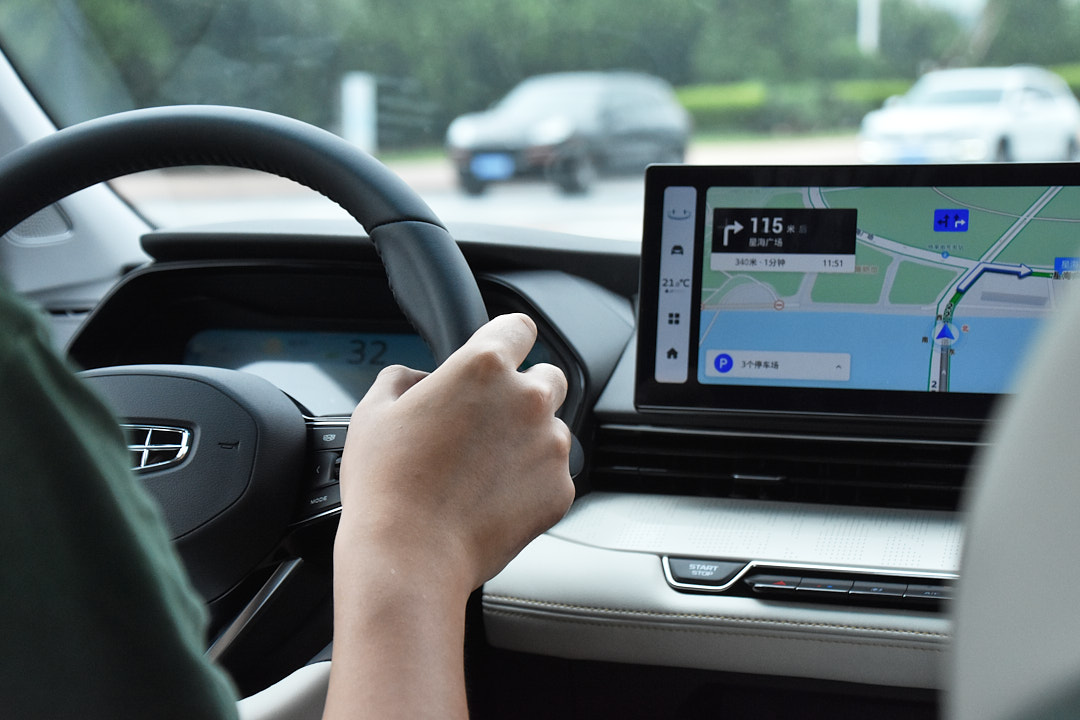
Another regret is that the throttle and brake pedals on this car are too light. I like to use strong regenerative braking or single pedal mode to drive electric vehicles instead of conventional braking. The Hi·X of the Denza L-series has indeed strong regenerative braking force, but the light throttle pedal makes it difficult for me to quickly find the right acceleration and control the pedal. After a while, my feet and neck feel sore. The same problem also exists with the brake pedal: the actual braking force is not weak, but the light and ungrounded foot feeling makes people lack confidence.
The last two regrets: the Denza L-series Hi·X does not have fast charging or discharging function. Let’s discuss these two issues separately. First, let’s talk about whether the lack of fast charging will affect the usability of the car.
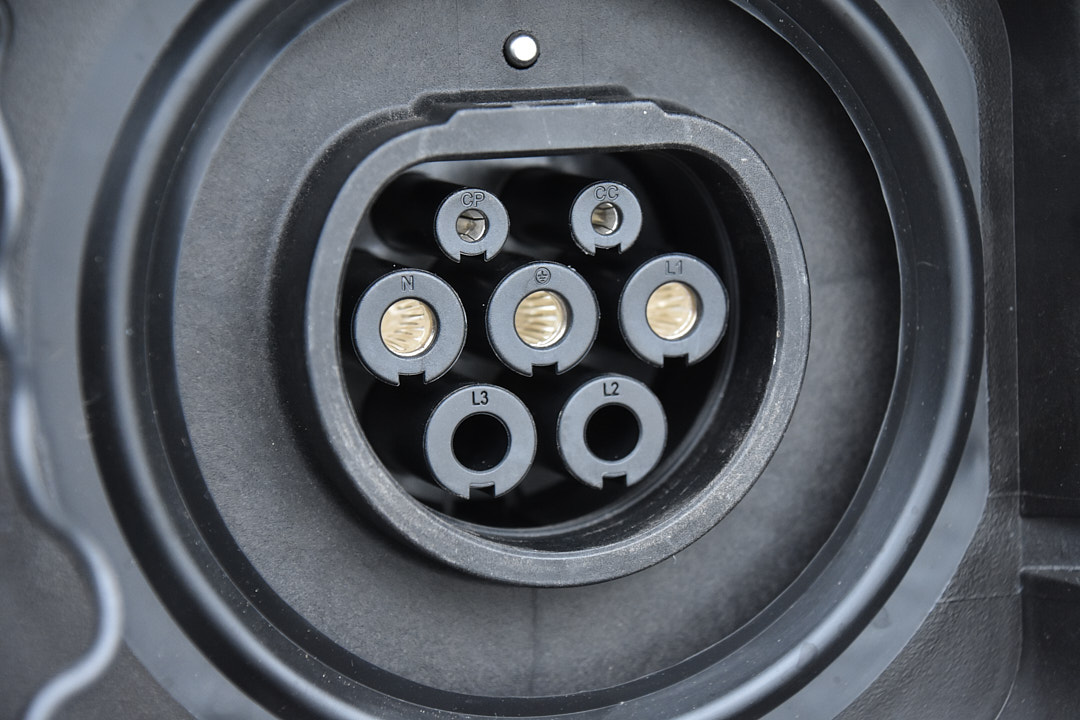
In my opinion, there are two types of customers who buy such small and medium battery plug-in hybrid cars: the first type has a home charging station and uses the car for commuting every day; the second type does not have a home charging station and uses the car like a petrol vehicle. For the first type of users, the lack of fast charging is not a big issue. For the second type of users, the official fuel consumption of the Denza L-series Hi·X is only 3.8 L/100 km, and the official range when fully fueled and charged is 1,300 km, so there is no problem using the car in hybrid mode for daily driving.
Of course, the BYD Qin Plus 120 km version has fast charging, and consumers may compare the two cars when making a purchase decision. In this aspect, the Denza L-series Hi·X is at a disadvantage.
Discharging to the outside is a function that adds the final touch to the car. With the improvement of the epidemic situation, camping is once again popular. If the 15.5 kW battery of the Denza L-series Hi·X could support discharging, it could naturally expand its usage scenarios: spending weekends camping with the whole family and lighting up electric hot pots. So, personally, it is a pity that the Denza L-series Hi·X cannot discharge to the outside.
However, all these complaints must be returned to the price of the car. We need to be clear that the Denza L-series Hi·X has a price of only RMB 129,800-145,800, and can be registered in most cities with green license plates. The whole series is equipped with a 15.5 kWh ternary lithium battery, which can accelerate from 0 to 100 km/h in 6.9 seconds, and has a fuel consumption of 3.8 L/100 km.Imperium L Rex Hi·X still maintains a leading position in the most crucial power output quality among its peers, despite its flaws. After all, it’s not fair to expect perfection from a car that costs less than 150,000 yuan. Besides, the appearance and interior design of Imperium L Rex Hi·X are also competitive enough.
The appearance and interior are exquisite
Mature appearance under family design
The following are the dimensions of Imperium L Rex Hi·X’s appearance, which is at the same level as BYD Qin PLUS DM-i:
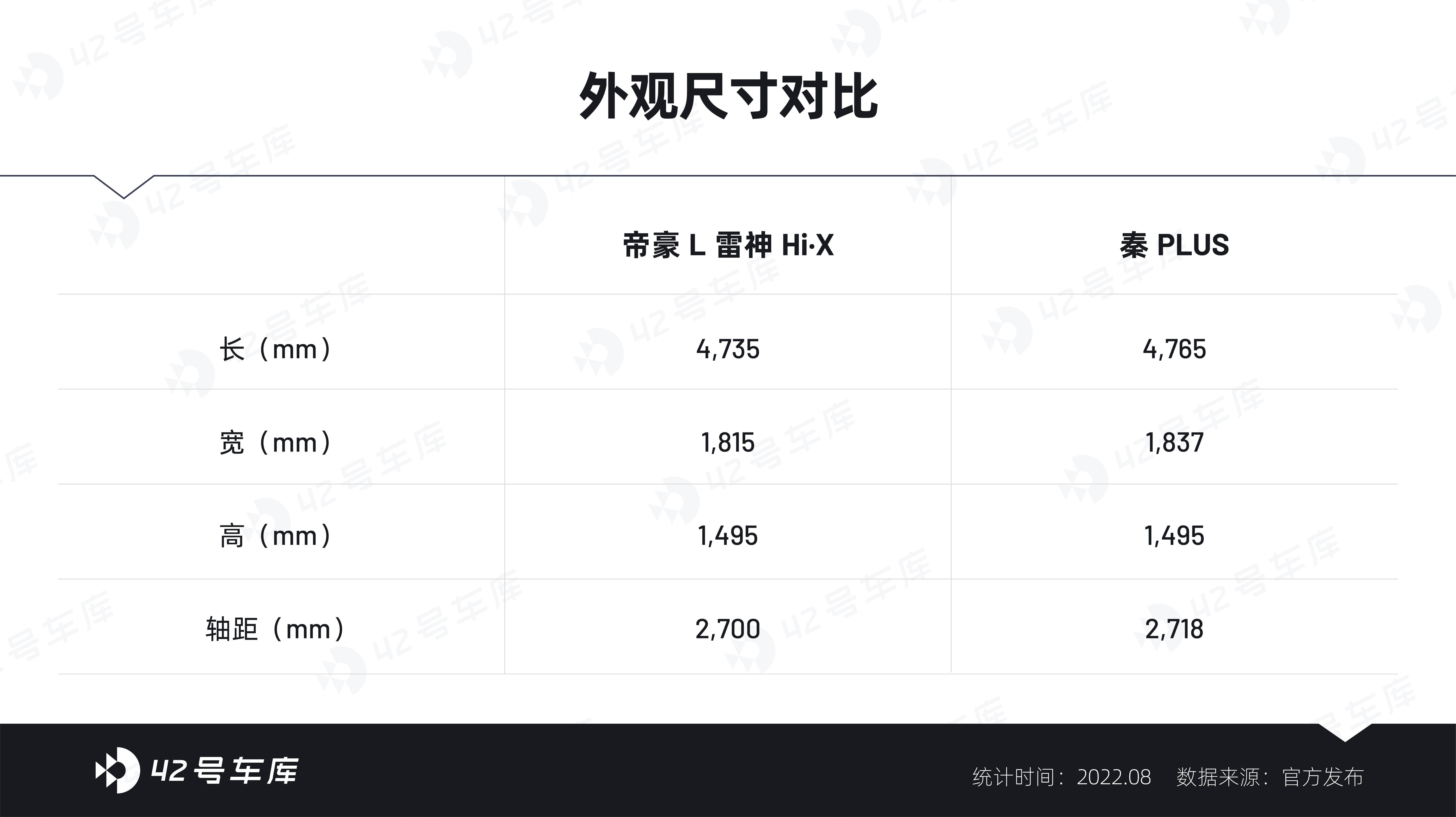
Under the family design style of Geely 4.0 “Energy Storm”, the front face of Imperium L Rex Hi·X is very exquisite and smooth. The delicacy of the front face comes from two aspects: first, the diamond-cutting process used by the air intake grille of Imperium L Rex Hi·X makes it look very three-dimensional from the side. The decorative plates on both sides are laser-engraved with blue dots, which have a good visual effect.
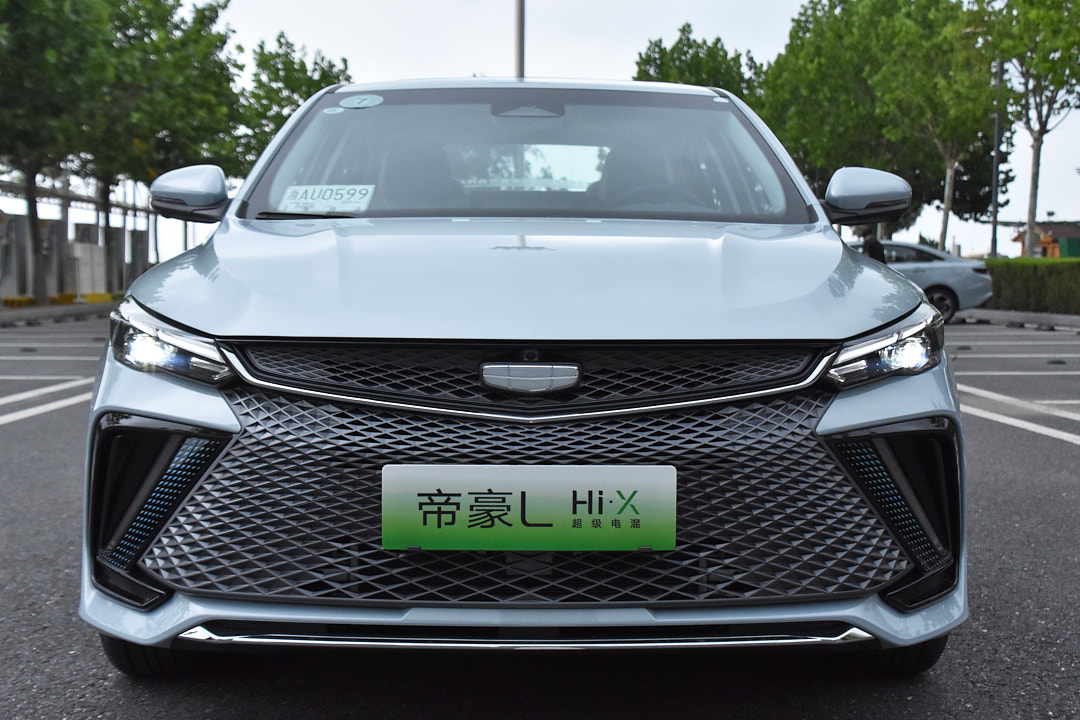
Secondly, the sense of luxury brought by the LED headlights. The 12 lamp beads have a maximum illumination distance of 172 meters, and the top-equipped models also have the function of adaptive high beam and low beam.
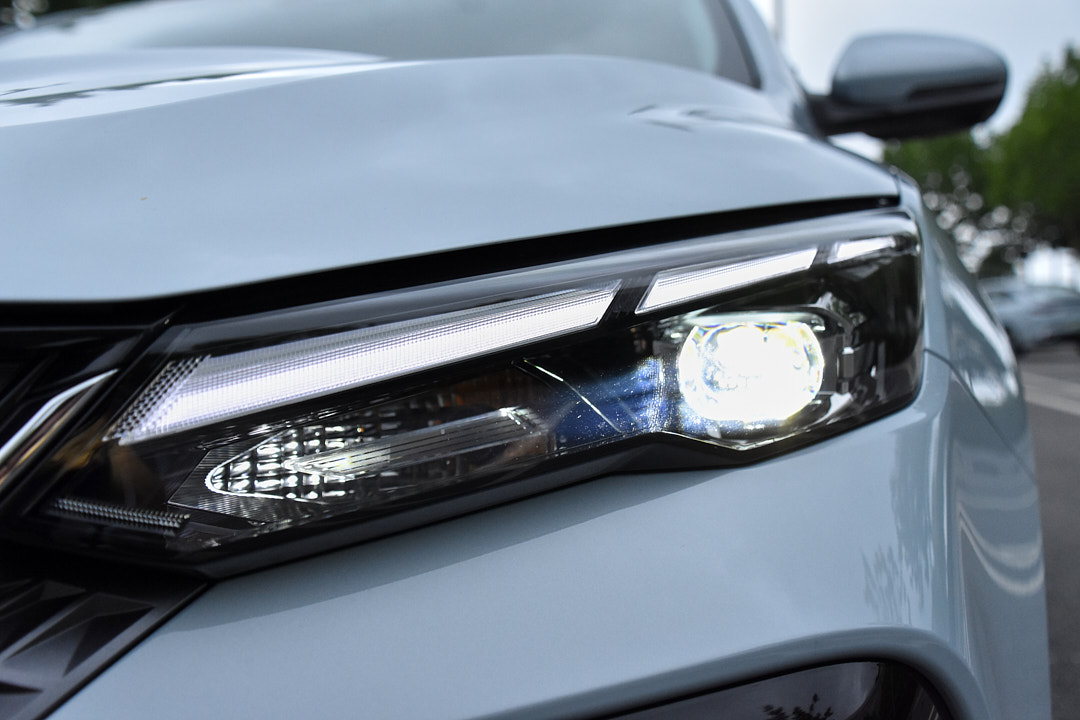
The top-equipped model of Imperium L Rex Hi·X has an L2 level auxiliary driving system with 5 cameras + 1 millimeter-wave radar, which can realize full-speed range adaptive cruise, lane keeping, and AEB collision warning. However, the lane centering ability of this system is not very good. In the experience process, the car always swags from side to side, and I hope this problem can be solved through OTA update in the future.
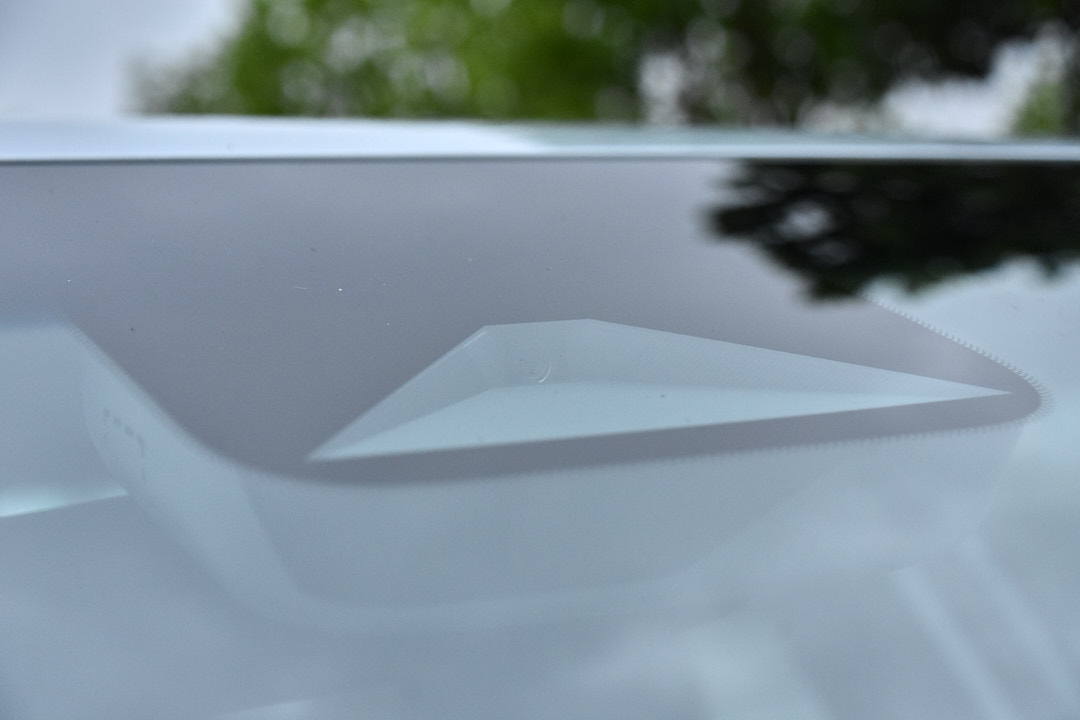
Due to the limitation of the size of the car body, the rear of Imperium L Rex Hi·X still looks insufficiently smooth. The designer let the tail slightly raised to add a touch of sports atmosphere as much as possible. However, it is the raised tail that makes Imperium L Rex Hi·X less harmonious than the regular version of Imperium.
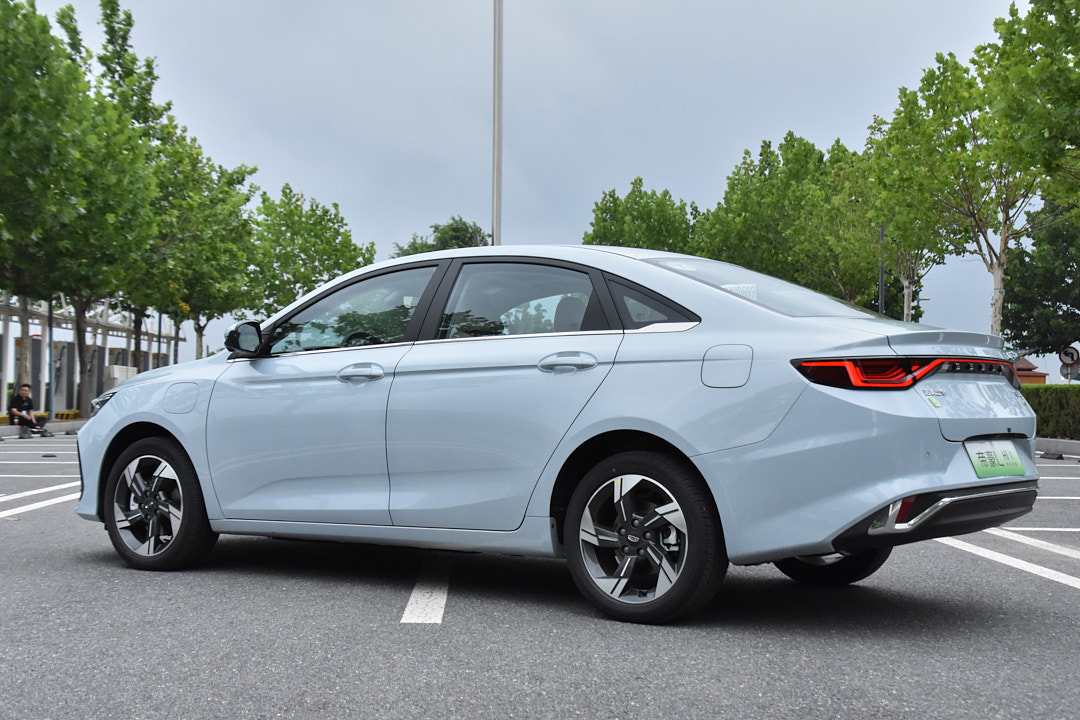 The continuous LED taillights give a sense of class to the vehicle. The internal light source is soft and gives a silky texture when it lights up. The shape of the lights echoes with the silver trim on the bumper. The green Hi·X logo on the rear distinguishes between the gasoline and hybrid versions of the car.
The continuous LED taillights give a sense of class to the vehicle. The internal light source is soft and gives a silky texture when it lights up. The shape of the lights echoes with the silver trim on the bumper. The green Hi·X logo on the rear distinguishes between the gasoline and hybrid versions of the car.
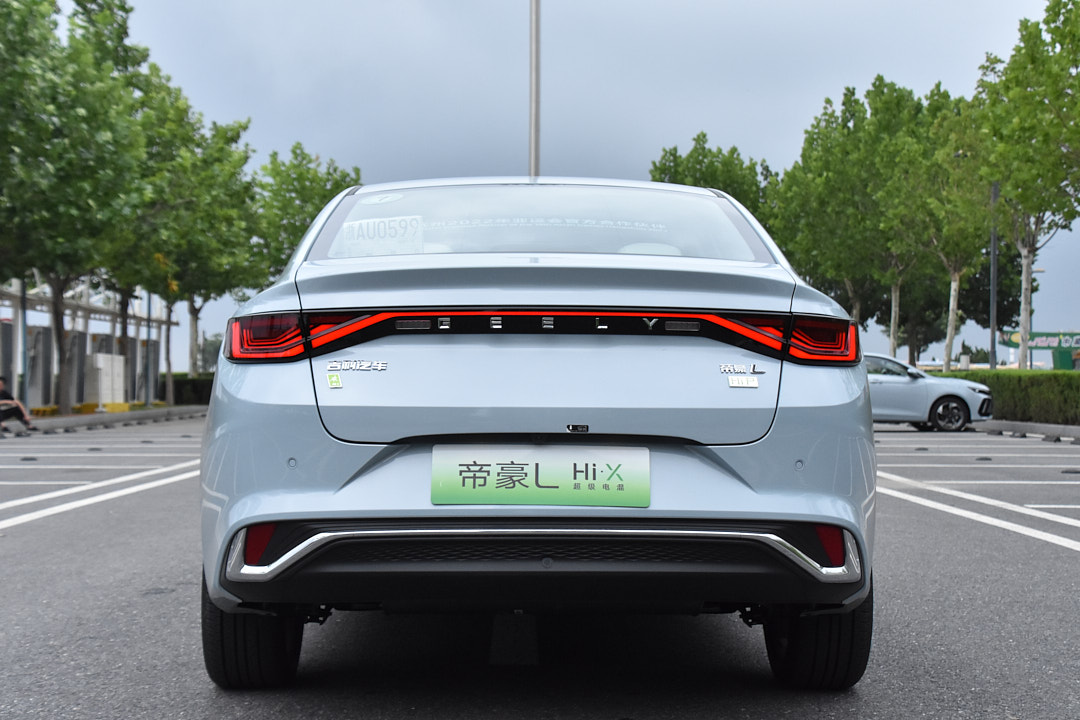
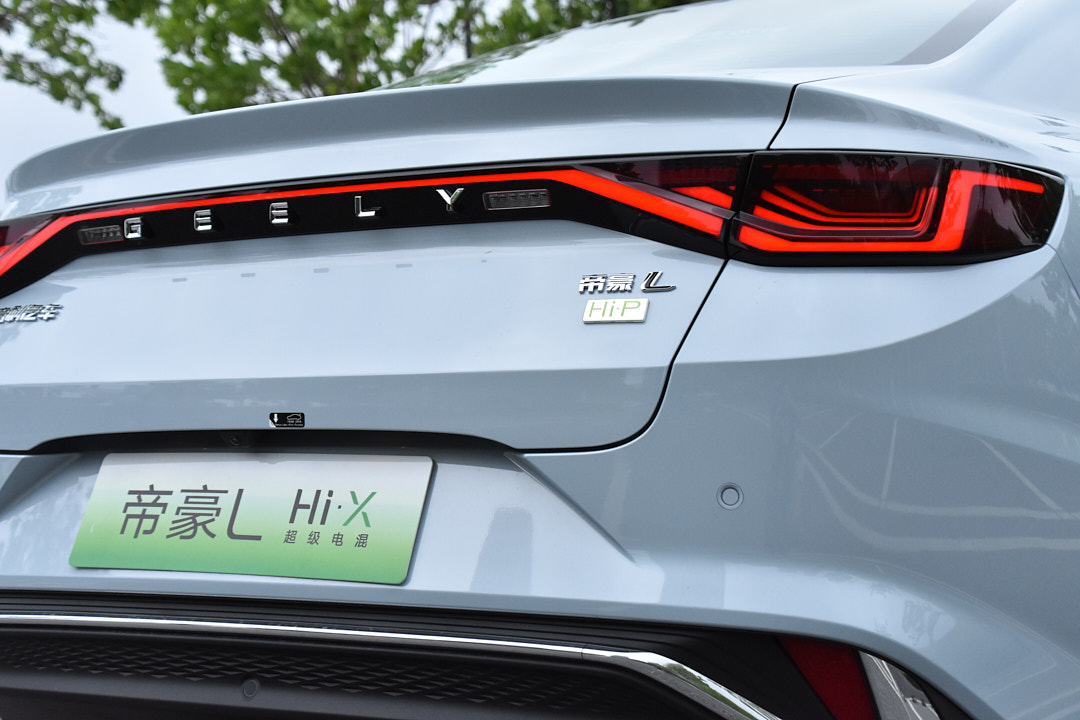
The Cabin Deserves Praise
The interior design of the Empress L Lightning Hi·X is not much different from the gasoline version. Overall, it has a simple style, and the air conditioning and steering wheel functions are controlled by physical buttons, which are very convenient to use.
It is worth mentioning that 90% of the interior of the Empress L Lightning Hi·X is made of soft materials. The places where hands can touch, such as the door handles and the upper side of the glove box, are made of materials that feel like leather. Also, the new car with only 1,000 km has a very small internal odor, and there is no discomfort even with the windows closed and the air conditioning on. This is a feature that Geely has inherited well from Volvo.
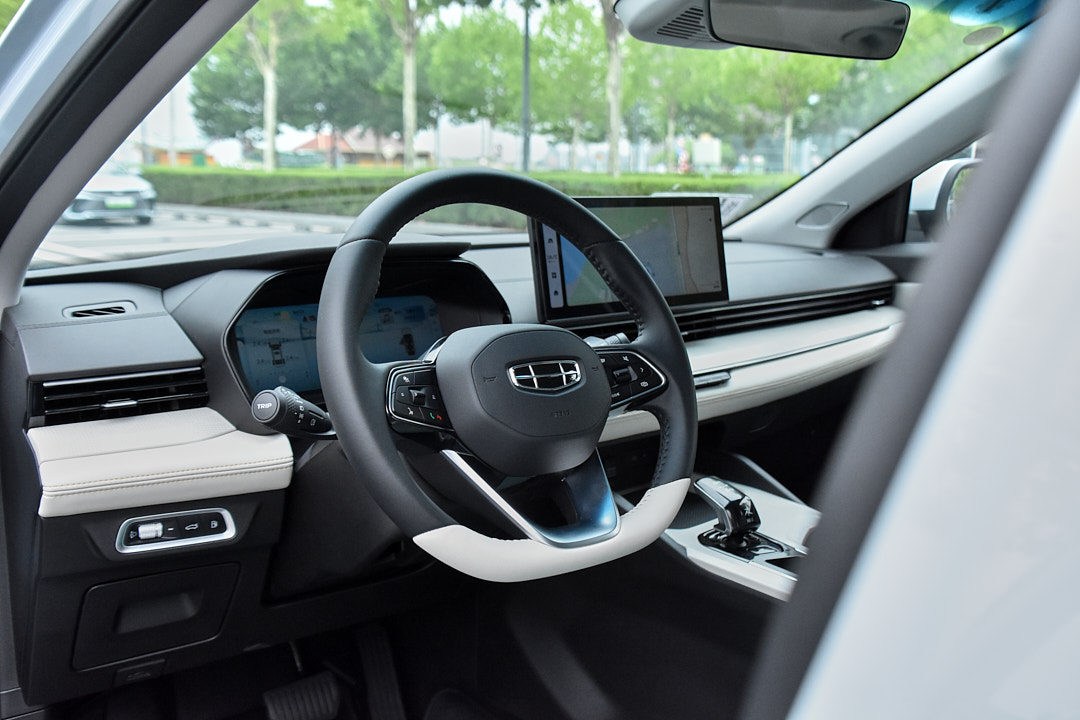
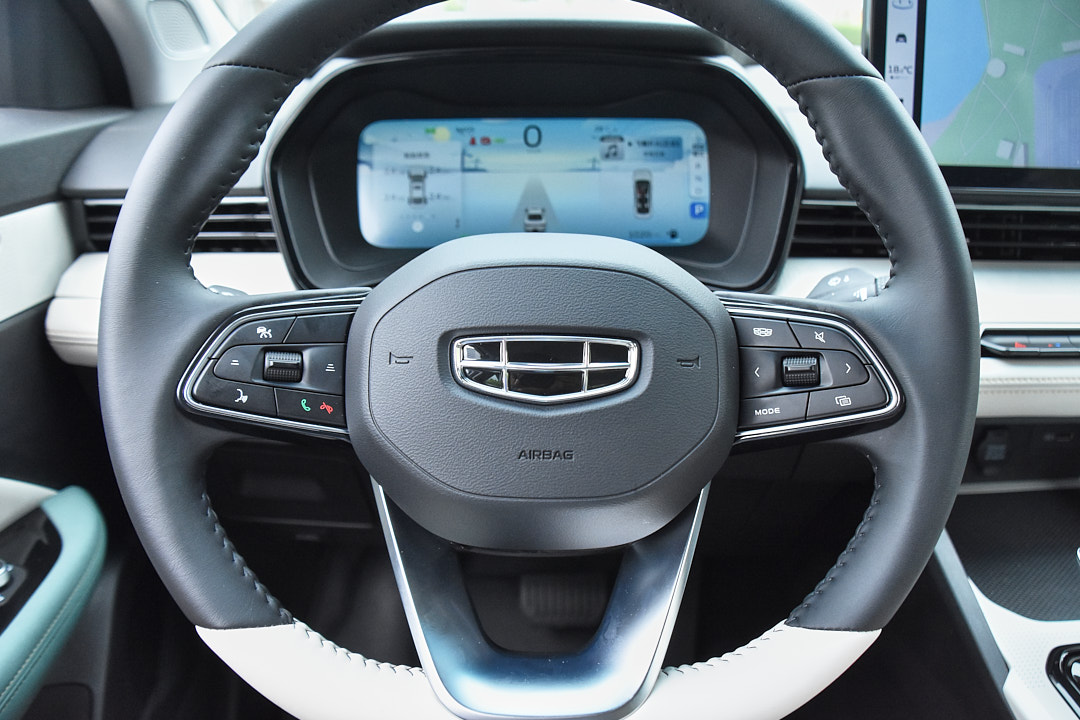
The black crystal style gear lever also has the logo of the Lightning hybrid Hi·X, and moving it left and right can adjust the strength of energy recovery. The overall feel and feedback are good and have a certain sense of luxury. The front row is also equipped with 2 USB ports and a 120 W power interface, which can meet daily use. It is a pity that there is no Type-C interface.
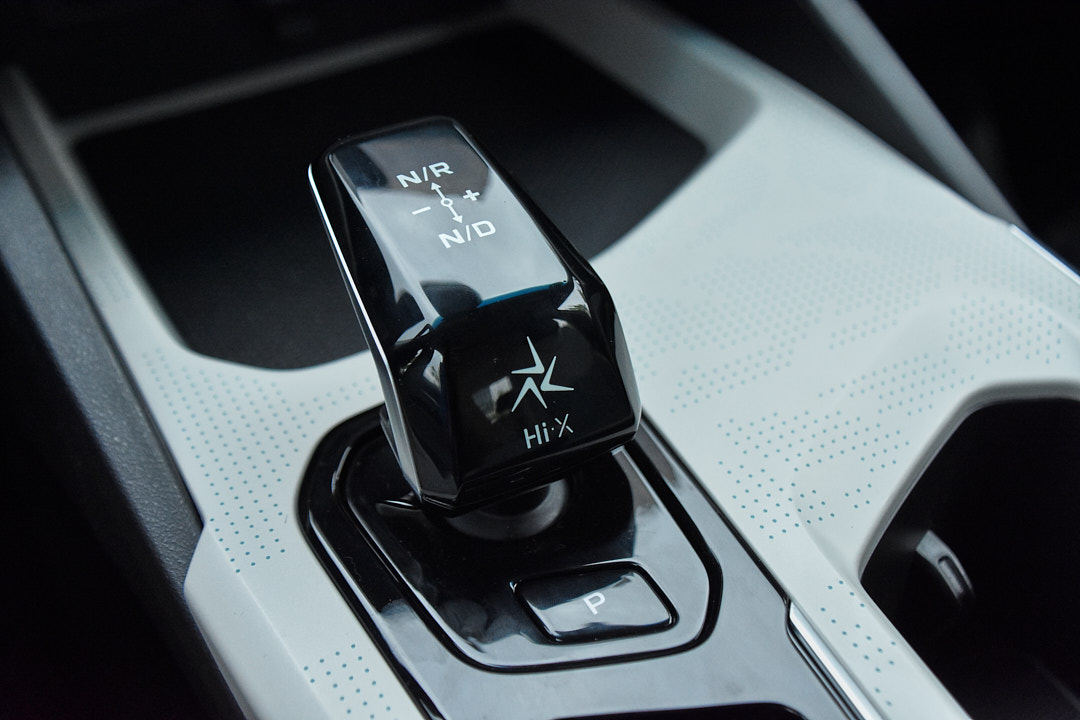
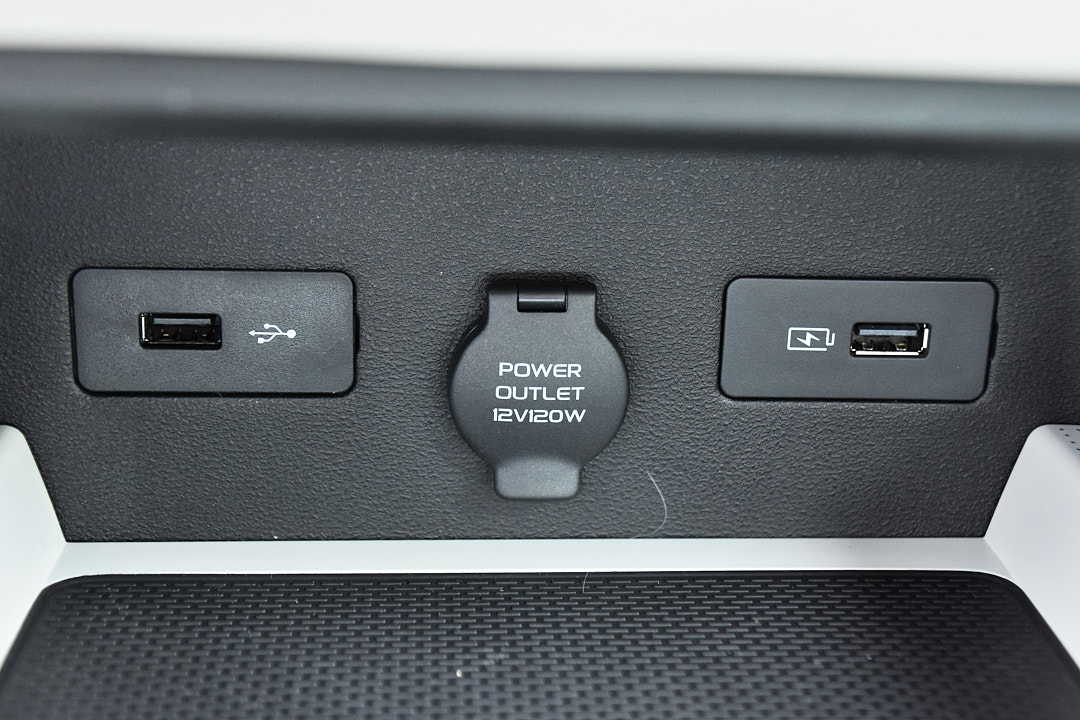
The 12.3-inch center console screen supports features such as Gaode Maps, Cloud Listening, and Volcano Car Entertainment. All the clicking and sliding are quite smooth. What is surprising is that the voice assistant with continuous conversation support has a high recognition rate and supports a wide range of functions; the transparent bottom feature on the top-of-the-line model is very convenient for parking in tight spaces.
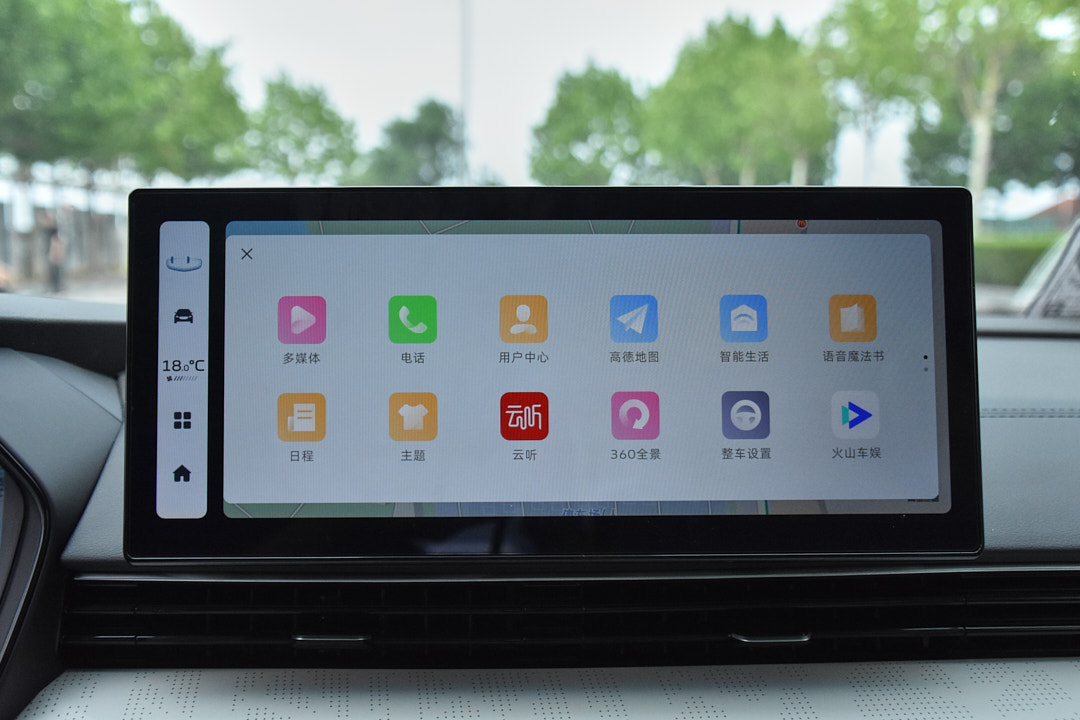
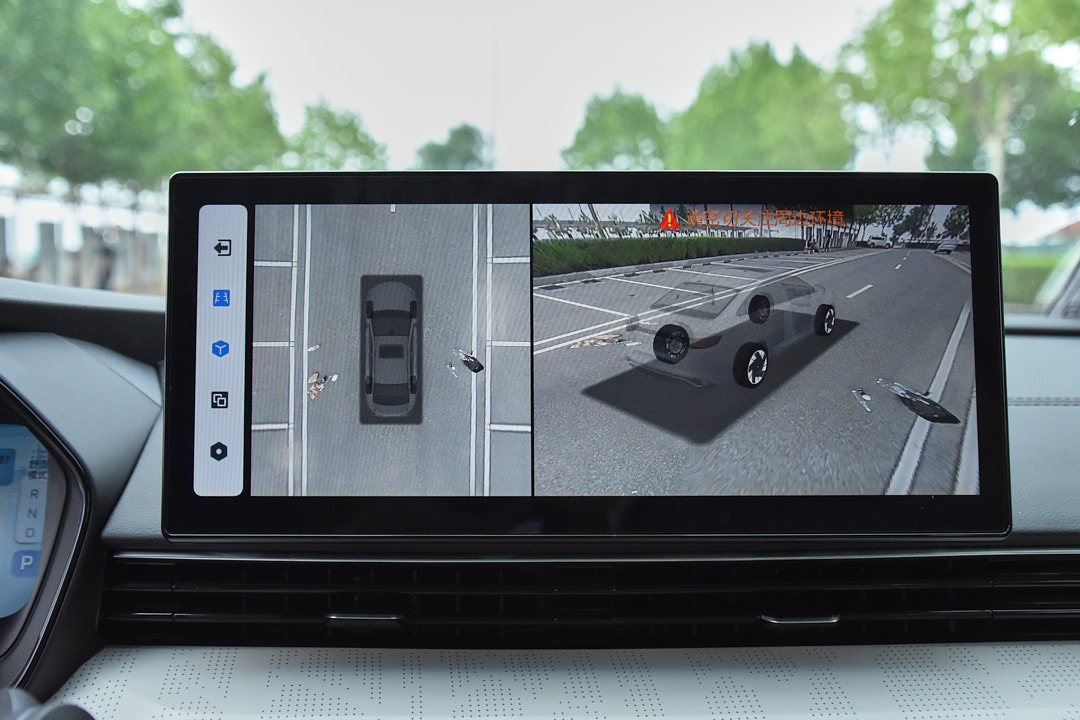
In addition, the Dorcen L EV Hi-X is equipped with “Three-Finger Screen Mirroring” feature that could transfer the navigation information on the central control screen to the 10.25-inch instrument panel. At this time, the speed and gear information will automatically move to the lower right corner smoothly.
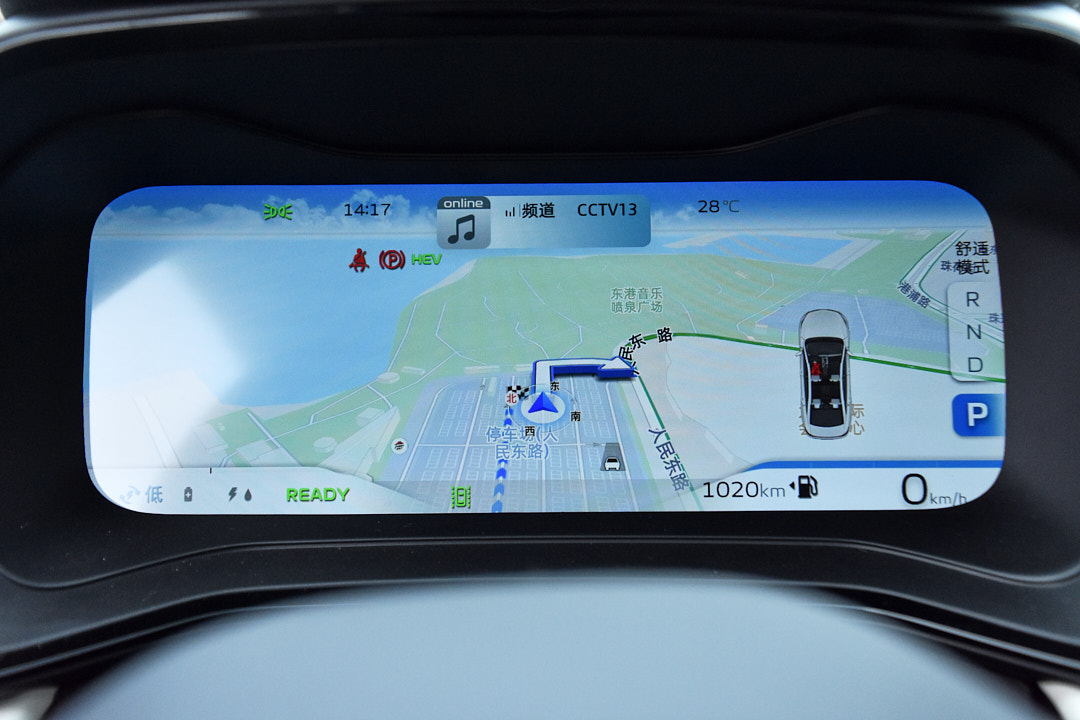
The seat fabric of the Dorcen L EV Hi-X is of similar suede texture to moleskin, and the top-of-the-line models come with front seat heating. These seats both look and feel great with good wrap-around support and a sporty style. However, it needs to be noted that even the top-of-the-line model only has a power-adjustable driver’s seat.
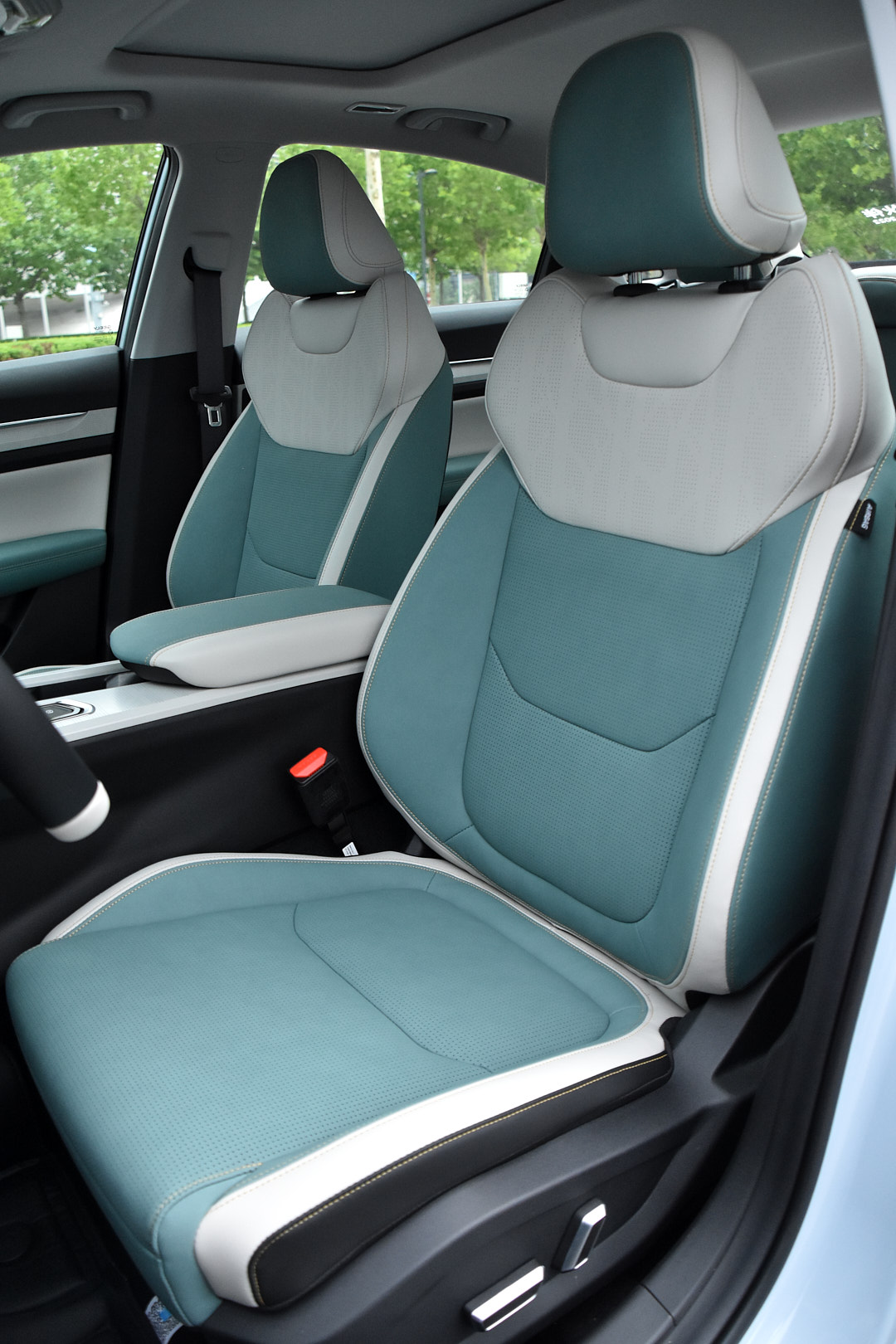
I’m 175cm tall, and even after adjusting the driver’s seat to a comfortable position, there are still about two fists of space in the back seats of the Dorcen L EV Hi-X, which is more than enough for daily use. The back seats also have good support, but the headrests are a bit hard and not comfortable to lean on.

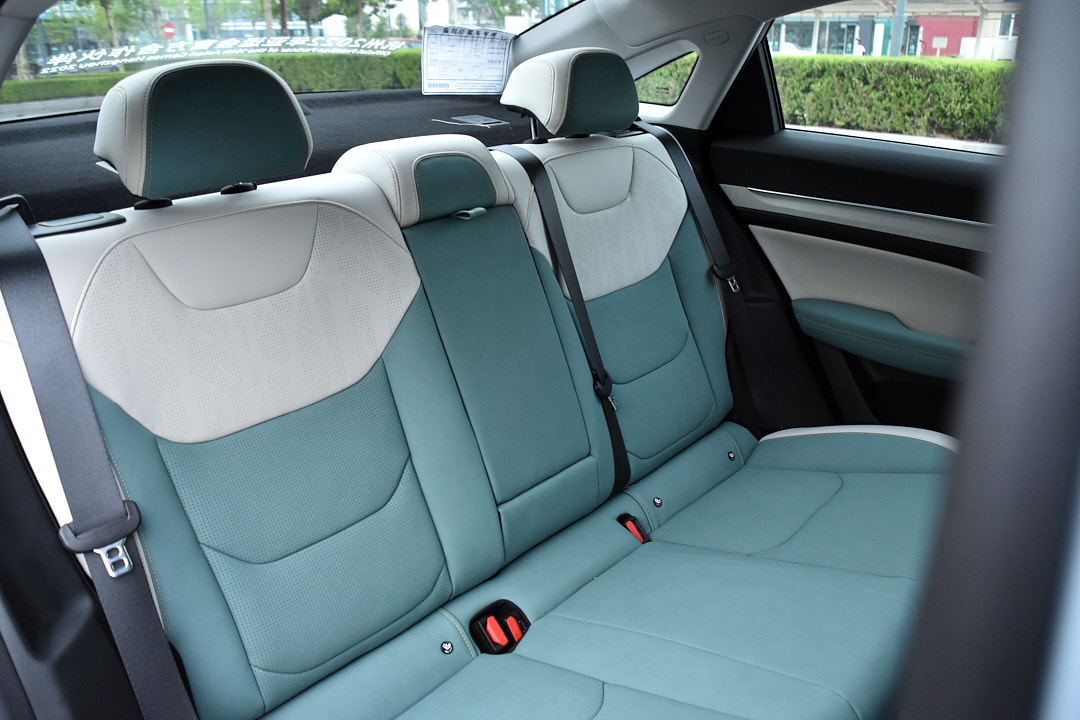
Compared with the flaws in the chassis, the appearance and interior of the Dorcen L EV Hi-X are both well balanced and will not become negative factors in the user’s car purchasing decision. On the contrary, in terms of cabin odor control, seat wrap-around support, and voice assistants, this car still gave me some surprises. For a top-of-the-line compact car with a price of less than 150,000 yuan, such performance is worthy of recognition.
Conclusion
In terms of price, the Dorcen L EV Hi-X range priced between 129,800 to 145,800 yuan and the BYD Qin Plus highly overlap; in terms of product, the Dorcen L EV Hi-X full range comes with a 15.5 kWh ternary lithium battery pack, a 1.5 T four-cylinder engine, 3-speed DHT, and better acceleration performance than the Qin Plus, while the official power-to-fuel consumption ratio is the same at 3.8 L / 100 km.This is clearly a premeditated and precise strike. Similar to BYD, the Thunder of Qoros’s hybrid family has a clear hierarchy, with a large battery pack and 2.0 T engine version prepared for high-end models and Lynk & Co brand and a small battery + 1.5 T version on the Emgrand L Thunder Hi·X. This mature product lineup increases the reuse rate of parts, and the reduced costs are reflected in the car prices, which undoubtedly benefits consumers.
According to Geely staff, online orders for the Emgrand L Thunder Hi·X surpassed 30,000 in June, and offline sales data is also continuing to rise. Hopefully, the delivery cycle of this car can be shorter. After all, in this price range, fast delivery is also one of the advantages that cannot be ignored.
The hot sales are easy to understand. After all, several years ago, could you imagine that you could have a range of 1,300 km, acceleration of just over 6 seconds, and fuel consumption of 3.8 L/100 km for less than 150,000 RMB?
So, after test driving, I couldn’t help but marvel:
Nowadays, hybrid sedans have almost been firmly “controlled” by domestic manufacturers. The last stronghold defended by joint venture models has been swallowed up, and everyone no longer chooses to compare themselves to them. Faced with BYD, who is in the lead, Geely, who entered the hybrid sedan market, presented the Emgrand L Thunder Hi·X, officially staging a product-led “arena”.
This article is a translation by ChatGPT of a Chinese report from 42HOW. If you have any questions about it, please email bd@42how.com.
